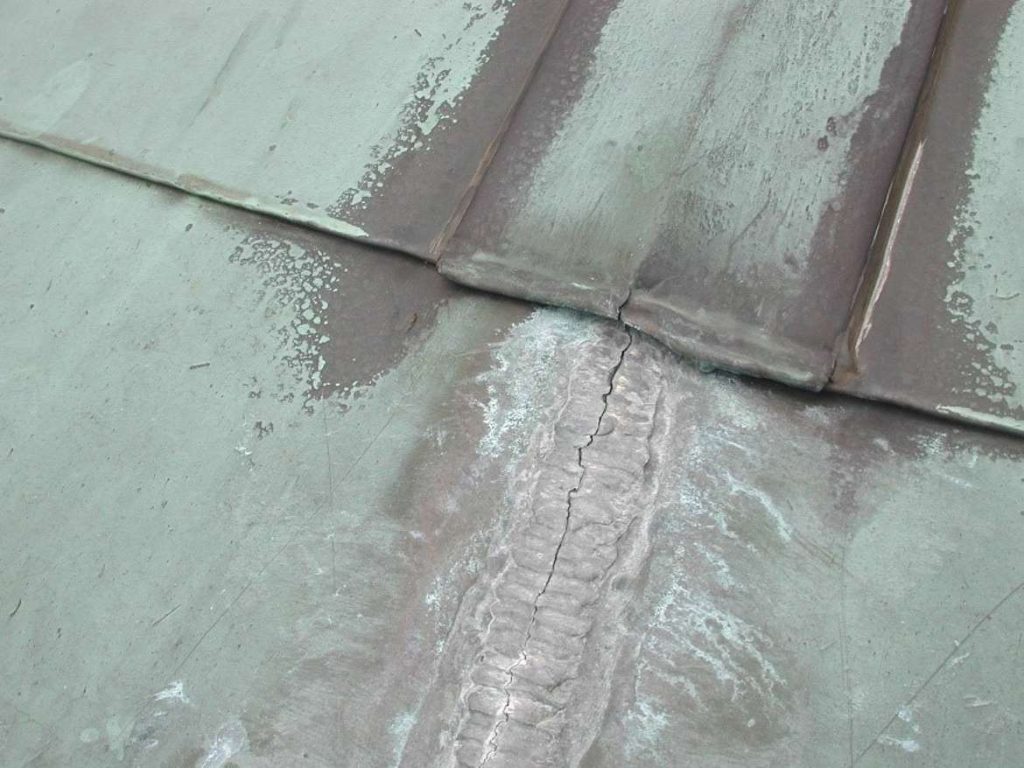Cyclical Testing of Flat Lock Copper Seams

The use of flat seam copper roofing in the U.S. dates back to Paul Revere’s copper installed on the Massachusetts State House in 1802. Since then, flat seam copper has been widely used in low-sloped roofing applications as it is a reliable, durable roofing material; history shows that flat seam copper roofing can provide a service life of 100 years, which the original State House roof achieved. However, flat seam copper roofing is only as reliable as the quality of the seams between panels.
A common failure is cracking of flat-lock soldered copper seams and subsequent water leakage through the open seams. Although certain “best practice” guidelines have existed for years, the guidelines are based on practical experience instead of testing, and currently there is no industry consensus on what constitutes “acceptable” practice for constructing flat-lock soldered copper seams based on in-service performance. In service, these joints are subjected to snow and wind loads, but the most demanding loads are the cyclical thermal stresses incurred during temperature swings. To help identify the minimum requirements for meeting the in-service loads without failure, we determined the in-service cyclical thermal loads that flat seams likely experience using thermal modelling and finite element analysis, and performed cyclical load tests on seams with varying levels of workmanship using those parameters.
This article provides summary of our research and findings. We present the two variables that we determined to have a direct effect on the in-service life and failure mode of flat-lock soldered copper seams under cyclical thermal loads, and discuss how this knowledge can be applied to ensure a long-lasting, watertight installation in the field.
Publisher
Building Enclosure Magazine